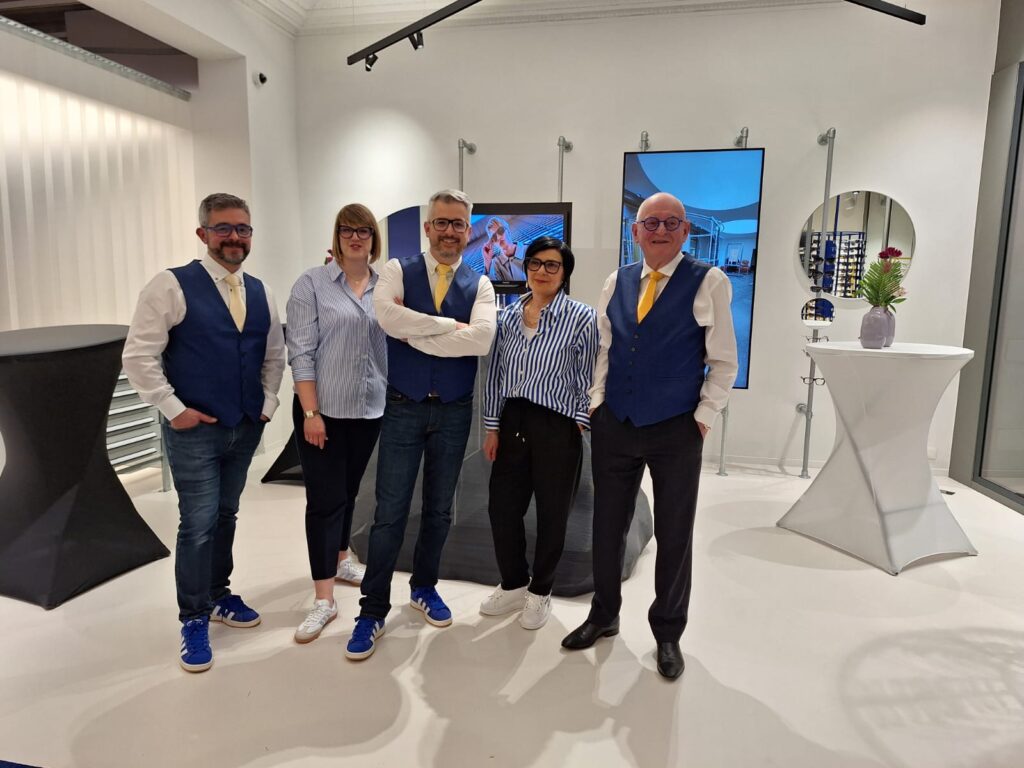
To illustrate this, we interviewed David Simonet, Marketing, Communication, Management, and Inventory Manager at Optique Simonet in Frameries. They recently enlisted the help of GeoConsulting to optimize their retail outlet and determine whether a relocation would be worthwhile.
Urbanization and Retail: A Double Challenge
Retail has traditionally been a driving force of the urban economy, but today it faces unprecedented challenges. The expansion of cities is often accompanied by an increase in commercial construction projects, contributing to urban sprawl and the fragmentation of city centers. However, this trend is increasingly being questioned by policymakers and urban planners, who advocate for a more rational and sustainable use of existing spaces. In the future, it will become increasingly complex to build new stores outside urban areas and existing commercial zones.
Capitalizing on existing points of sale instead of creating new constructions offers multiple advantages. It not only reduces the ecological footprint of commerce but also helps revitalize city centers by drawing consumers to already established areas. By reinvesting in existing structures, retailers can meet customer expectations while simultaneously contributing to a sustainable development dynamic.
Where to Start? The Importance of Diagnosis.
The optimization of existing stores begins with an accurate evaluation of their current situation. This diagnosis should be comprehensive and include various aspects, such as location, competition, store attractiveness, and customer profile. A thorough analysis makes it possible to identify the strengths and weaknesses of the store and determine the priority areas for improvement.
An essential aspect of this analysis is identifying how the store can be positioned to generate the maximum possible turnover. This involves a thorough study of the trade areas to understand where customers come from and which segments and zones are the most promising. Another critical dimension is the analysis of the attainable market shares, which evaluates not only the existing competition but also the potential spending of the population in the target area. These analyses make it possible to determine whether it is realistic to expect turnover growth based on the socio-economic context of the location, and if so, under what conditions.David Simonet, responsible for the Optique Simonet retail chain, illustrates this approach well:
Indeed, this age group is often more volatile and attracted to large chains, requiring specific strategies to retain them.




Adapting the Offer to the New Demands of the Consumer
Consumer expectations are constantly evolving. To remain competitive, it is essential to continuously adapt the offer of the point of sale. This requires a good understanding of customer needs, which means conducting regular surveys and analyzing market trends.
This mapping analysis enabled Optique Simonet to better understand the local dynamics and adjust their strategy based on geographical and demographic specifics.
It is crucial to determine which levers to prioritize in order to improve the store’s performance and make it sustainable. This can include renovating the sales area to enhance the customer experience, introducing new services, or adjusting the product assortment to better meet the expectations of the most profitable segments.
Customer Experience: The Heart of Optimization
Another crucial aspect of optimizing points of sale is improving the customer experience. A store that offers a high-quality experience not only has a better chance of retaining its existing customers but also succeeds in attracting new ones. This can be achieved by renovating the sales area, improving staff training, or integrating new technologies to streamline the customer journey.
David Simonet shares his experience: « We renovated our store with a focus on the importance of customer experience
This renovation, supported by a thorough analysis of the market and customer expectations, enabled the chain to effectively reposition itself against the competition
Turnover Increase: A Natural Consequence of Optimization
A well-executed optimization not only improves the customer experience; it also leads to an increase in turnover. By adjusting the offer and optimizing the sales area, retailers can attract more customers, encourage them to spend more, and retain them in the long term.
At Optique Simonet, the guidance provided by GeoConsulting helped to take this decisive step.
The research also highlighted the importance of not unnecessarily expanding into areas where the competition is already well established, allowing the chain to better target its marketing actions.
GeoConsulting: A Partner for Success
The optimization of a point of sale often requires specialized guidance. GeoConsulting offers tailored services to help their clients transform their stores into true growth engines. The services provided include, among others, competition analysis, customer surveys, and operational recommendations to improve the customer experience and increase turnover.
As David Simonet emphasizes:
This type of support is particularly relevant for retailers who want to quickly adapt to new socio-economic contexts without losing sight of their identity and values.

Example of Optimization: The Case of a Grocery Store :
Let’s take the example of a grocery store that wants to optimize its performance. Our analyses often reveal various areas for improvement, such as adjustments to the layout, like modifying the height of shelves to make products more accessible and visible, or widening aisles to facilitate customer flow, especially during busy periods.
Additionally, supplementary services such as installing relaxation areas or providing child-friendly shopping carts can be recommended to enhance the shopping experience and extend the time spent in the store. It is also possible to identify which departments need strengthening or which food offerings could be added based on customer needs and product profitability. These adjustments, based on a detailed analysis of consumption habits and customer preferences, can not only improve customer satisfaction but also increase the store’s overall turnover.
For today’s retailers, optimizing their points of sale is no longer an option, but a sine qua non for success in tomorrow’s business world.


